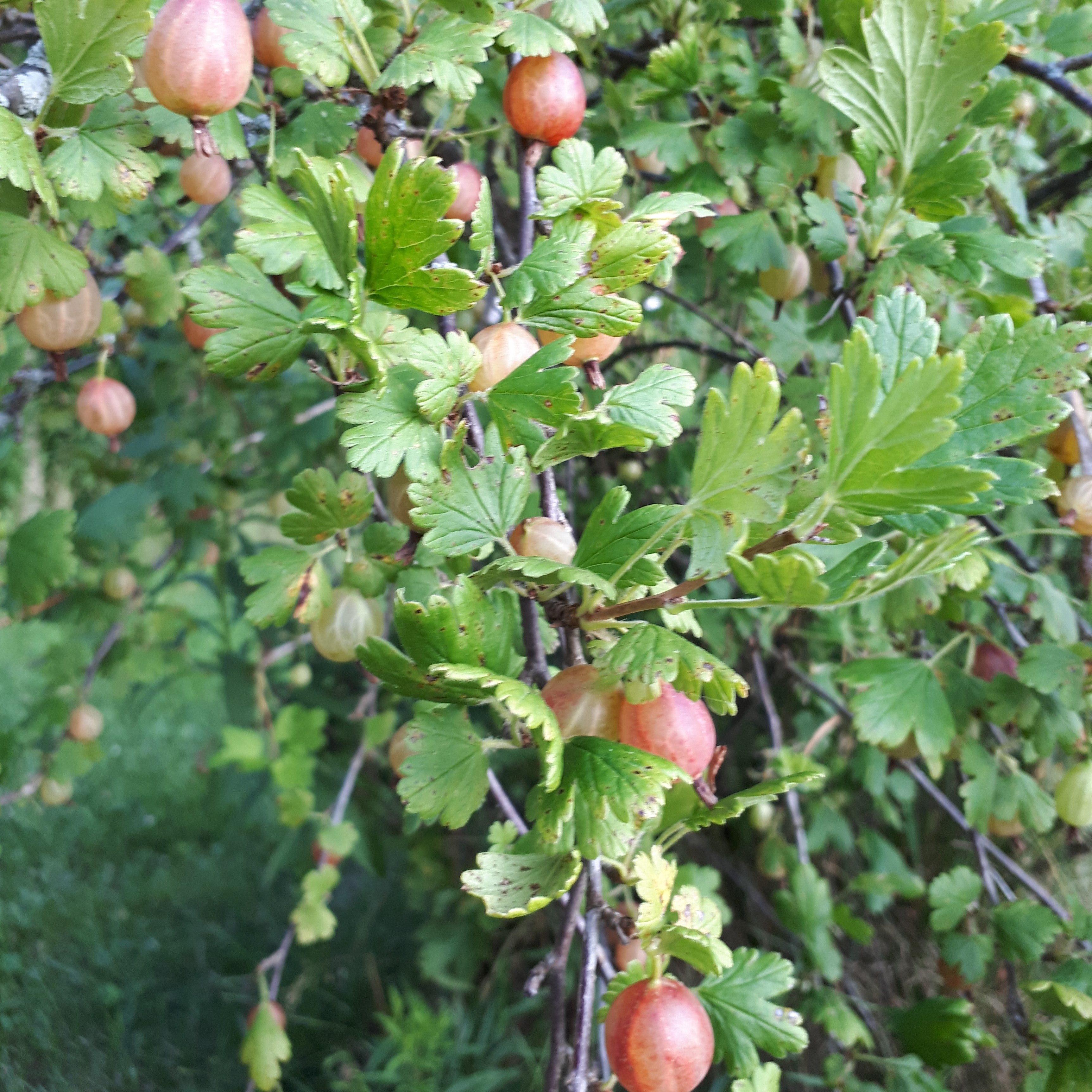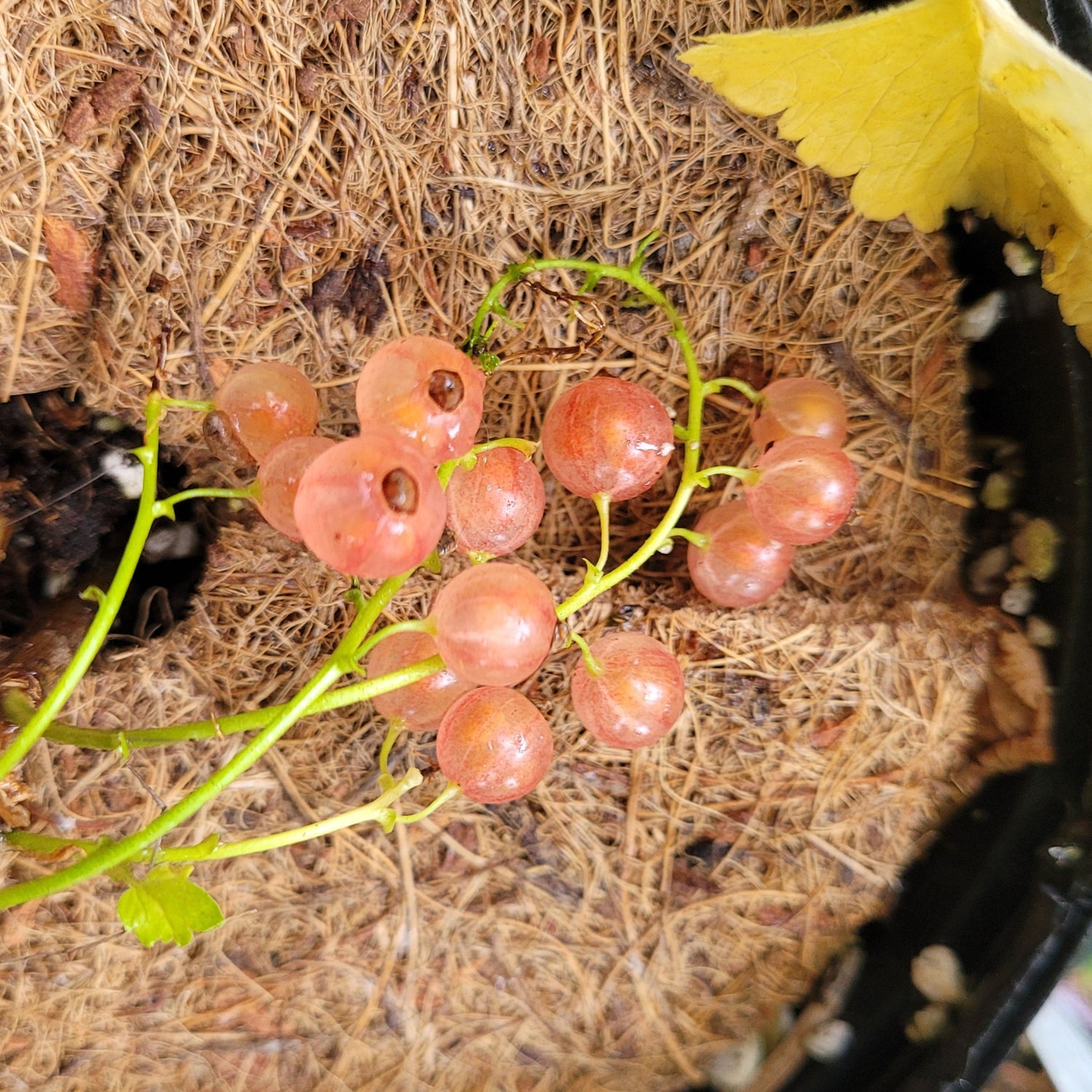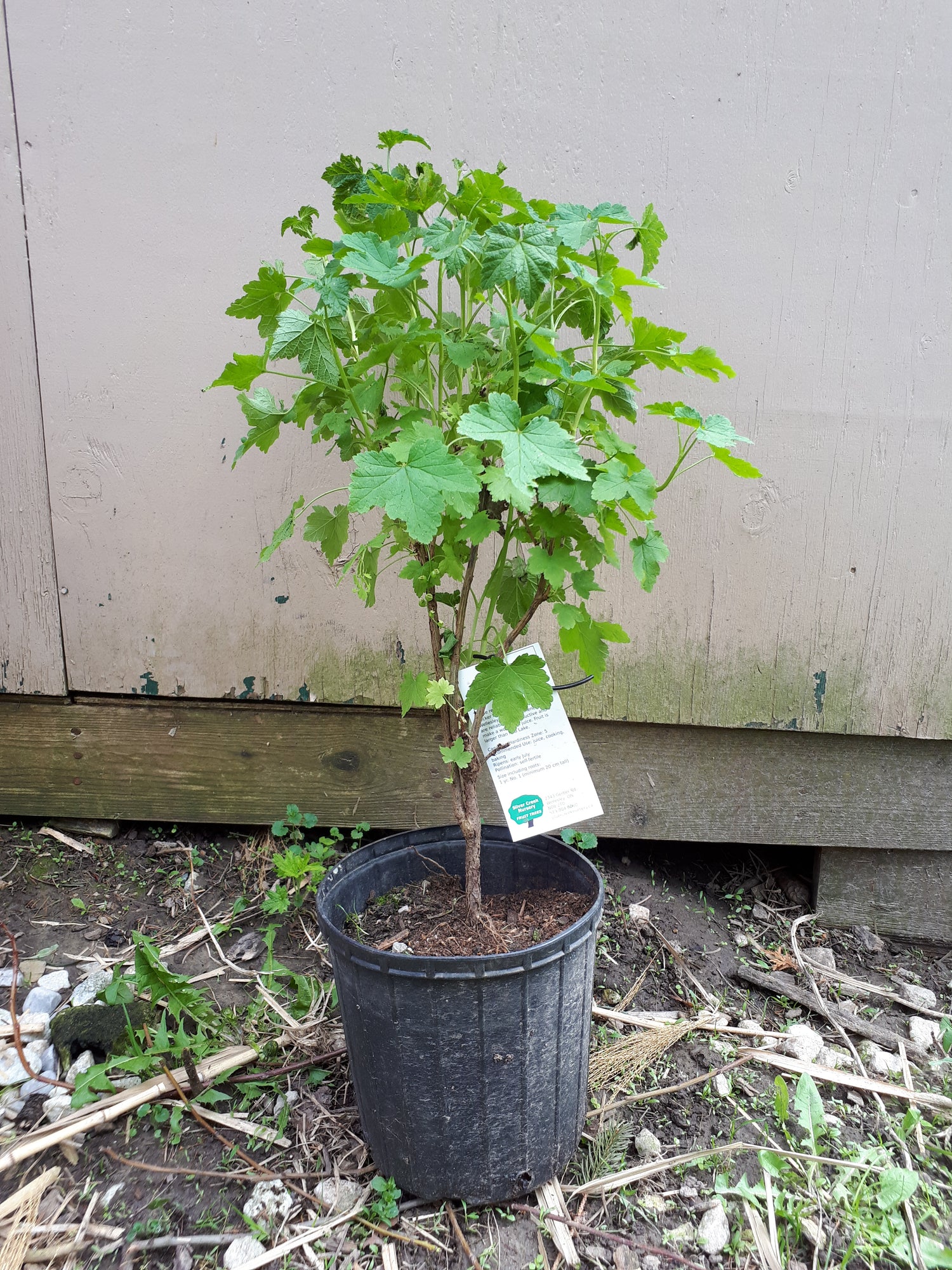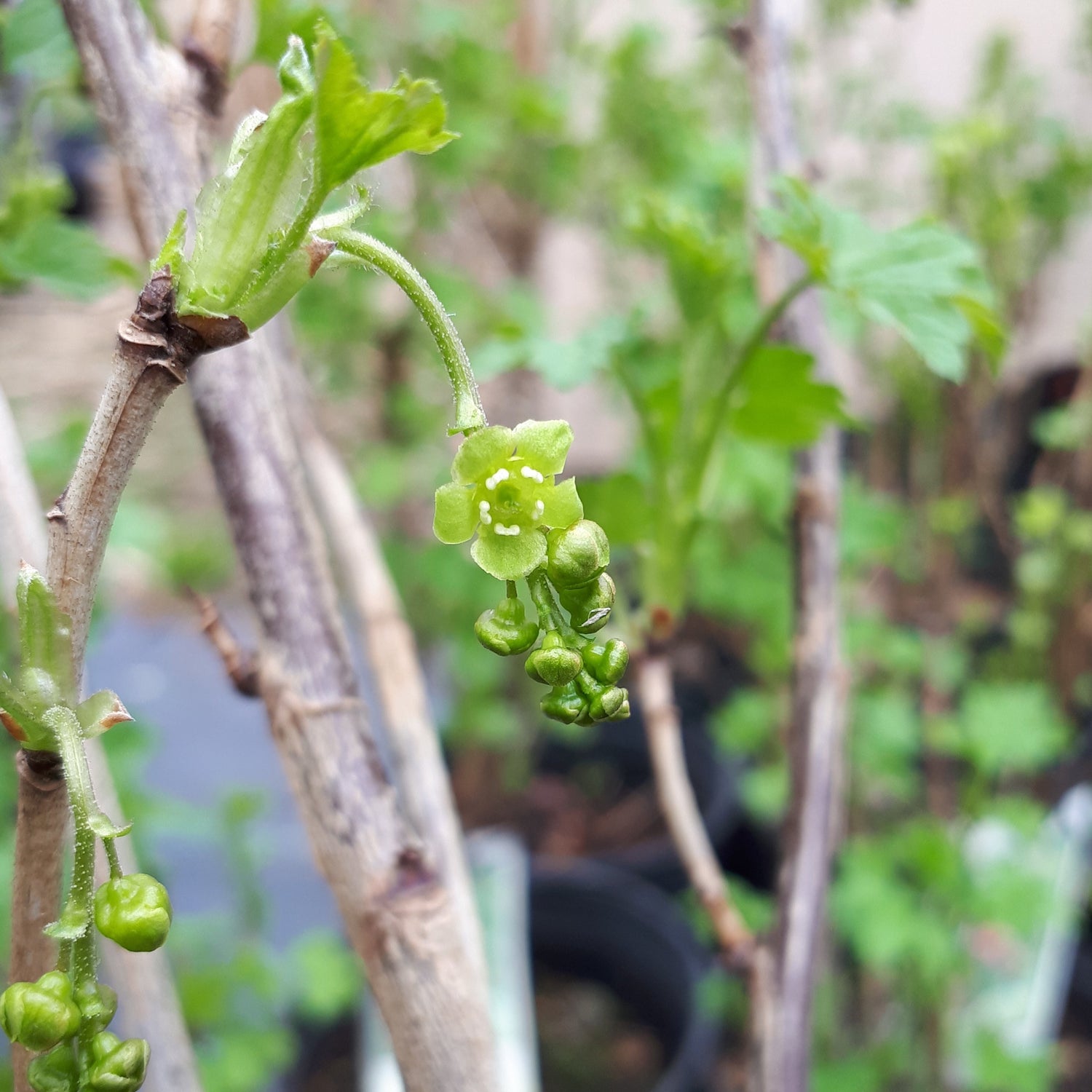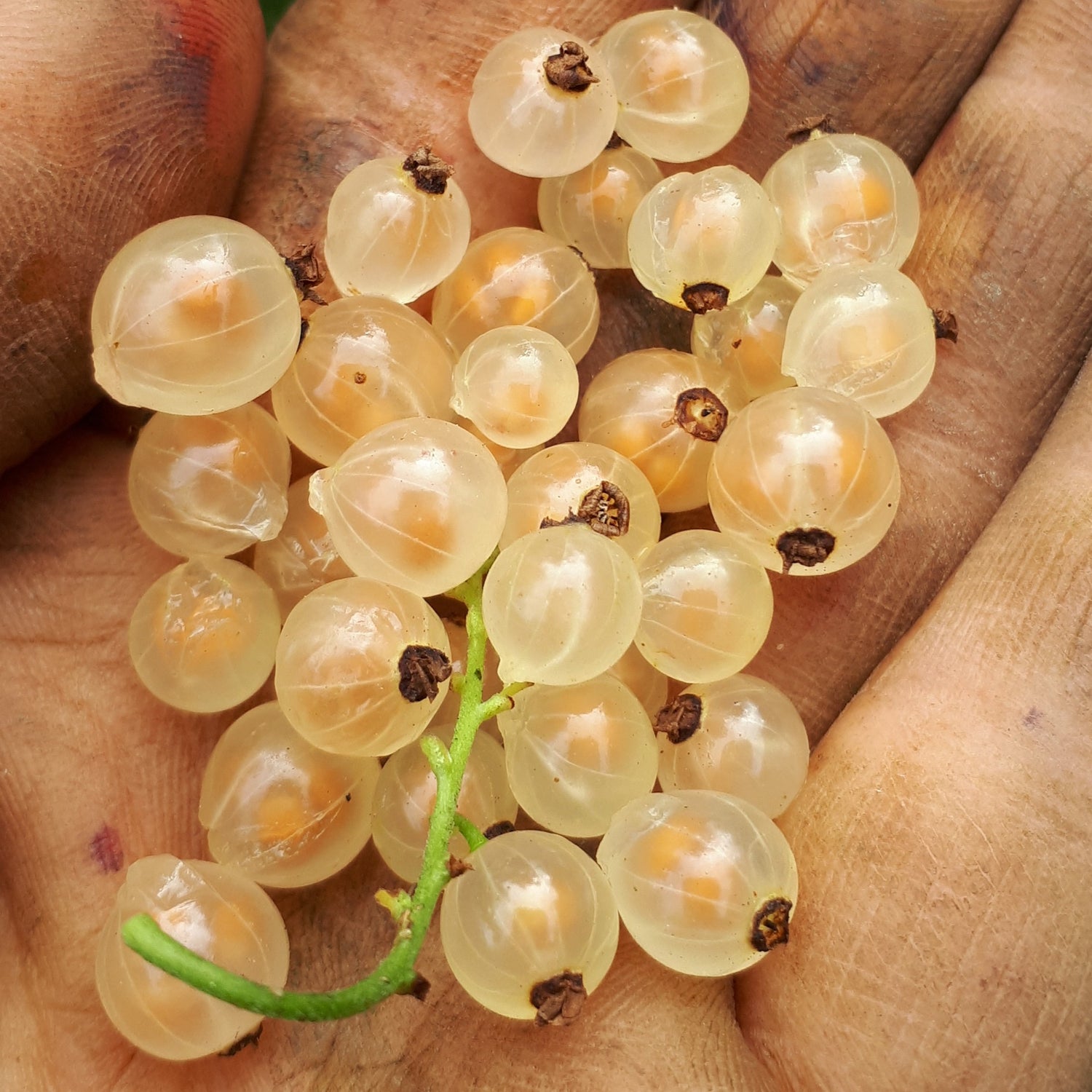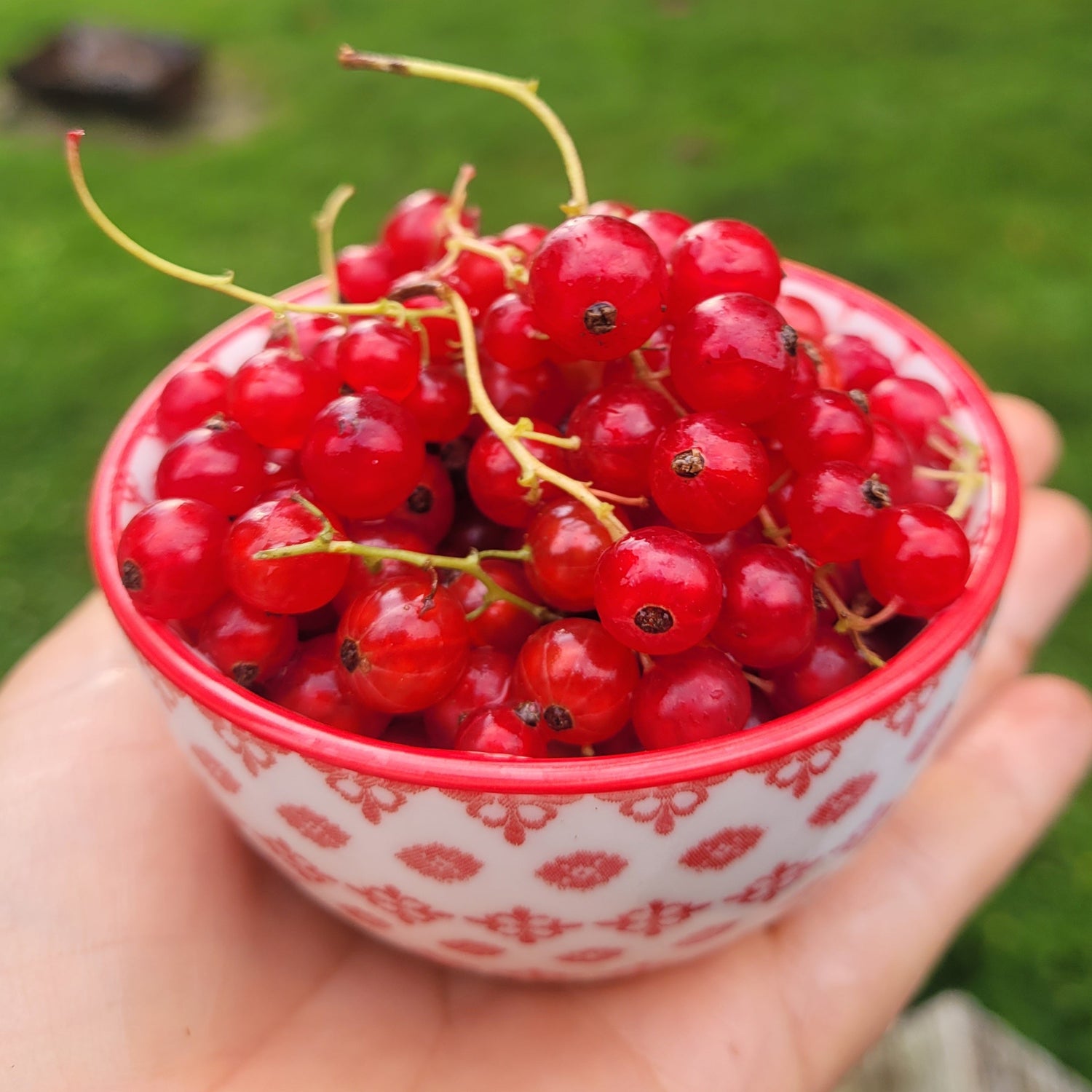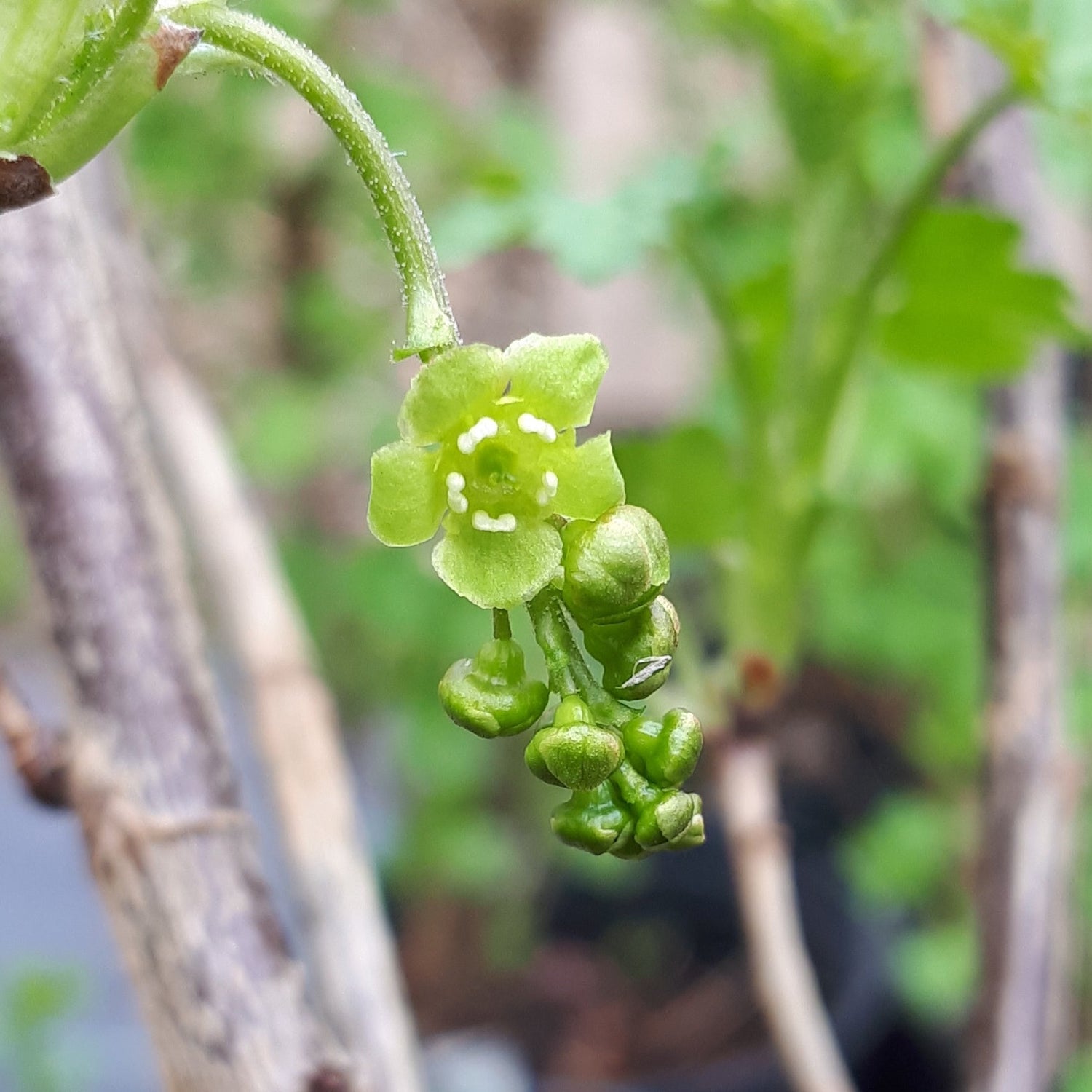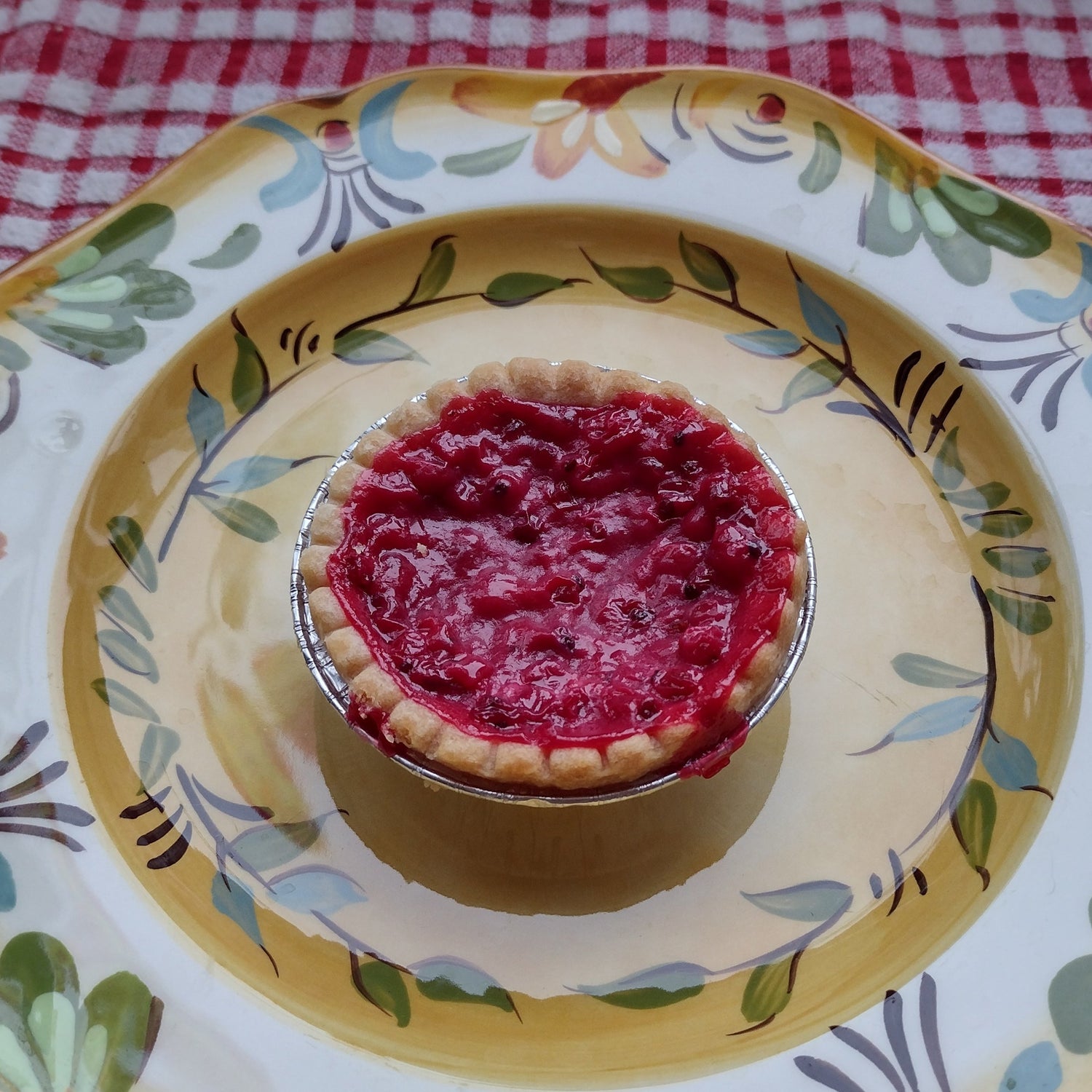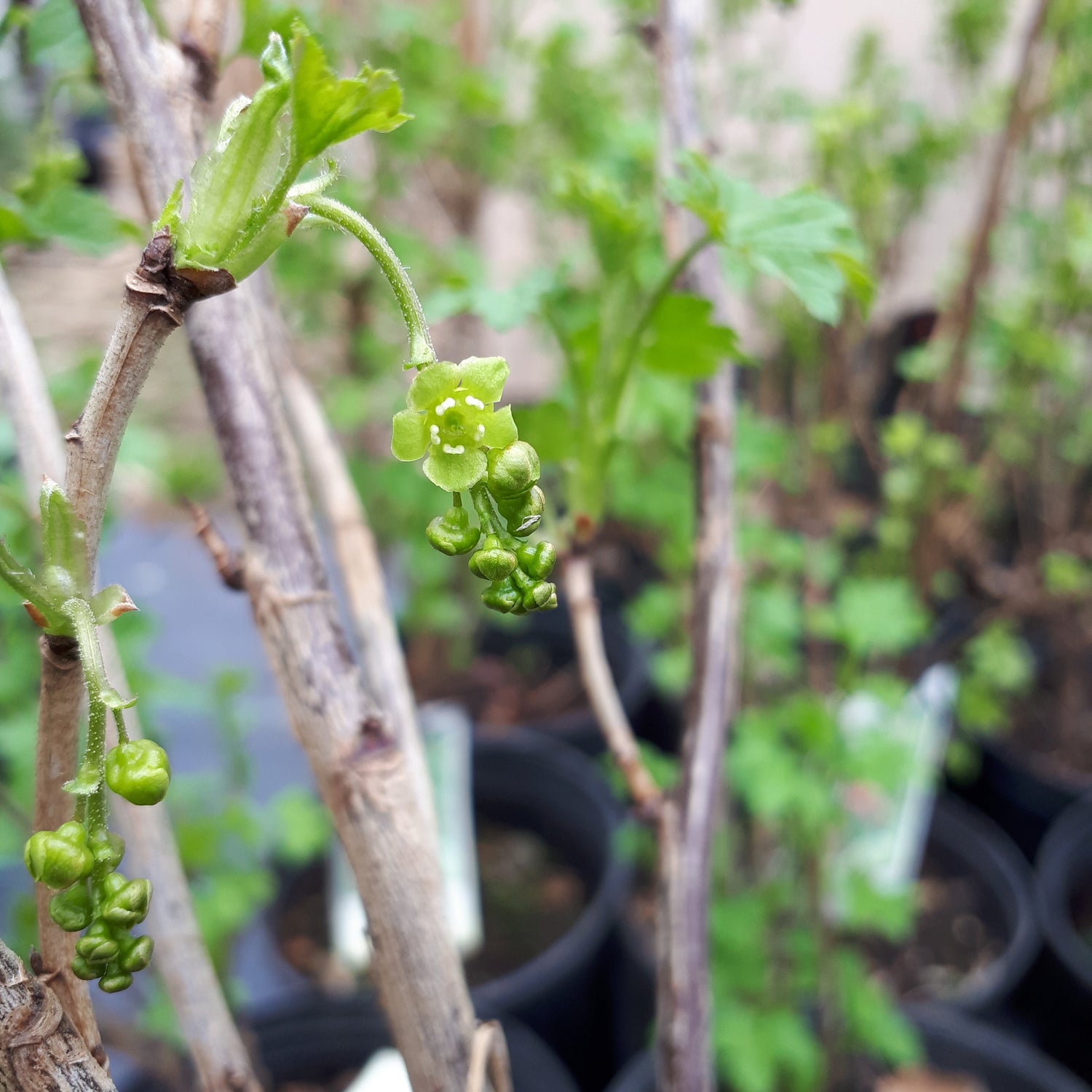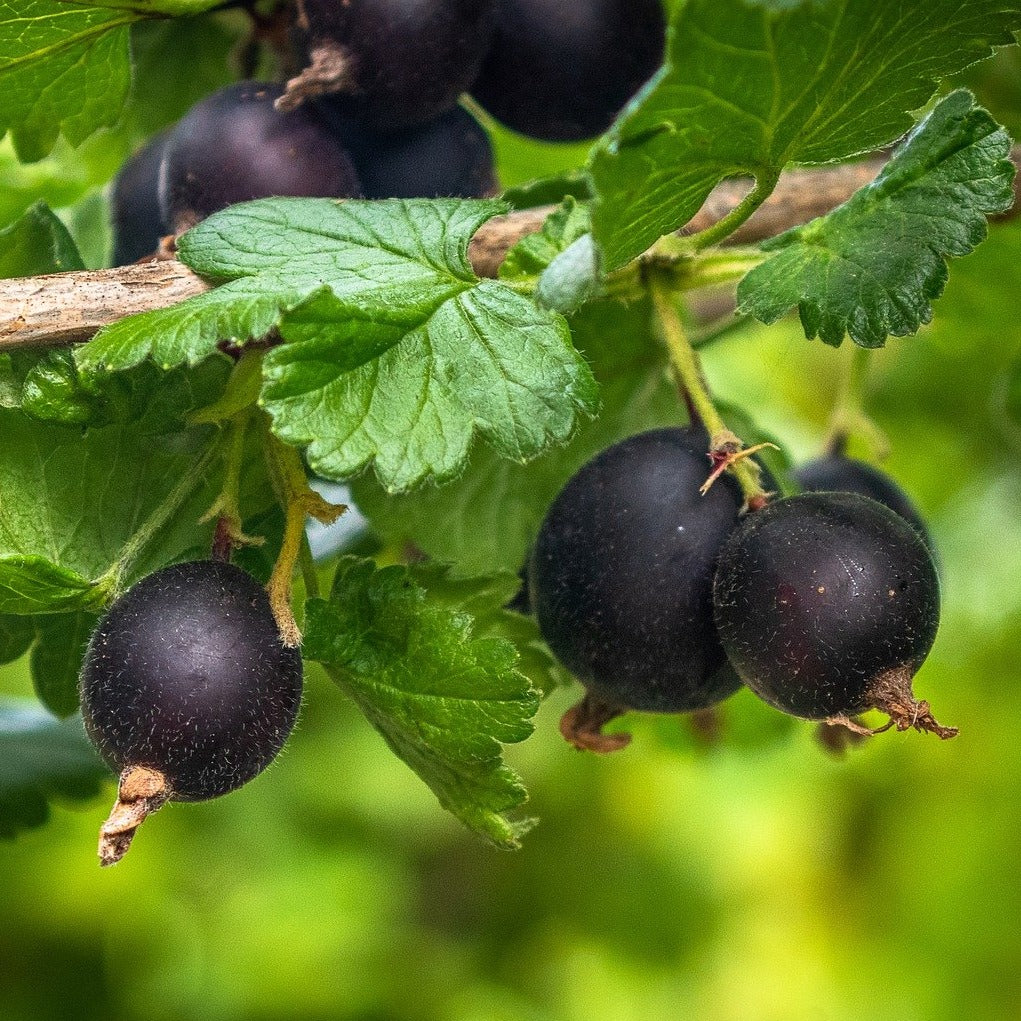Currants, Gooseberries & Jostaberries
Currants and gooseberries are generally low maintenance, adaptable bushes that are easy to care for. While black currants are primarily best when made into juice or preserves, gooseberries and red currants are versatile berries that can be eaten fresh or processed. Just be mindful of the thorns on gooseberries! These plants are self-pollinating.
Sort by:
7 products
7 products
2025 Staff Favourite
Pink Champagne Currants are Amanda's favourite this year! She says these are "beautiful translucent pink currants that taste as lovely as they look!"
All Staff Favourites are 20% off. The Staff Favourite Discount cannot be combined with other quantity discounts.
Species: Ribes rubrum
History: Pink Champagne currants are a cross between red and white currants. Although the exact origin is unclear, this variety was listed in the catalogue of William Prince's nursery in New York as early as the 1800s.
Why We Grow It: Considered to be one of the best fresh eating currants, Pink Champagne produces beautiful translucent pink berries that have a sweet, delicate flavour. They are easy to grow and produce numerous clusters of hanging, pink berries.
Species: Ribes nigrum
History: Titania black currant was developed by Pal Tamas in Sweden. It was bred as a cross between the varieties Consort, Kayaanin Musta, and Altaskaya Dessertnaya in 1969 and chosen for further evaluation in 1974. Since its release it has become one of the most popular currants in North America.
Why We Grow It: It is easy to see why Titania has become so popular. It produces large, juicy berries with a rich, mild flavour. It is also resistant to White Pine Blister Rust and mildew. The berries are great for a variety of uses, such as the black currant scones and black currant and blueberry tarts Steph made (see pictures)!
Species: Ribes rubrum
History: Developed in Holland, White Pearl currants, like all white currants, are actually an albino mutation of red currants. This variety has been popular in Europe for quite some time, although aside from its place of origin it appears there is little information on how it came to be.
Why We Grow It: These delicate translucent berries are white with a pinkish-gold hue, making them delightful to see growing in the garden. They have sweet and mild flavour that is slightly floral. The plant itself is quite cold hardy and bears prolific crops.
Species: Ribes rubrum
History: These red currants come from the Becker family homestead near Wellesley, Ontario where we are located. This is a great way to try something truly local!
Why We Grow It: In our experience, Becker red currants are reliable and productive. The fruit produced by Becker red currants are larger than those produced by Red Lake and make a wonderful juice. They can also be used for cooking and baking, such as the tarts made by Steph that are pictured here!
Species: Ribes nigrum
History: This black currant is a family classic that was grown by Ken's great-grandmother.
Why We Grow It: Grandma Ethel produces large fruit with a slightly stronger flavour than Titania and an unusual sweetness for a currant. The berries make a very tasty juice - the recipe can be found further below!
A note on the "Grandma" Series: Inspired by this modest currants' success here at the nursery, we decided to curate our own repertoire of family favourites! Check out our tried-n-true gooseberries, rhubarb and raspberries.
Species: Ribes uva-crispa x Ribes missouriense
History: Pixwell was developed at the North Dakota Experiment Station in a gooseberry breeding program that began in 1920. A cross between Oregon Champion and Ribes missouriense, the variety was eventually released in 1932. Pixwell was named for it's less thorny nature - as in smaller and less thorns than most gooseberries, especially as it grows older - which makes it easier to pick the berries.
Why We Grow It: Aside from living up to its name, Pixwell produces green berries that turn a lovely shade of pink to deep plummy-purple-red once they are fully ripe - though you can use the green berries for tangy chutneys and the pink stage is nice fresh too. The medium berries have sweet flesh and tart skin, and are great for fresh eating, pies, and preserving.
2025 Staff Favourite
Jostaberries are Wayne's favourite this year! He enjoys them because "they have the best qualities of both black currants and gooseberries."
All Staff Favourites are 20% off. The Staff Favourite Discount cannot be combined with other quantity discounts.
Species: Ribes x nidigrolaria, a cross between Ribes nigrum (black currants), Ribes divaracitum (black gooseberries), and Ribes uva-crispa (European gooseberries)
History: Jostaberries were created in West Germany in 1955 by Dr. Rudolph Bauer, although attempts to cross these three plants had begun as early as 1883 without success. They were eventually released to the public in 1977.
Why We Grow It: Jostaberries are a unique cross between three plants: black currants, black gooseberries, and European gooseberries. The berries taste like gooseberries at first and transition to a black currant taste as they ripen and darken.

